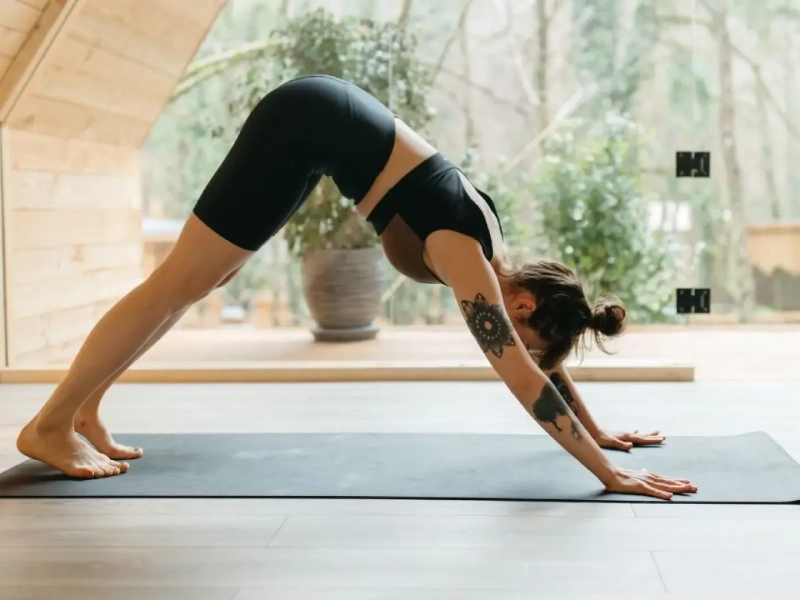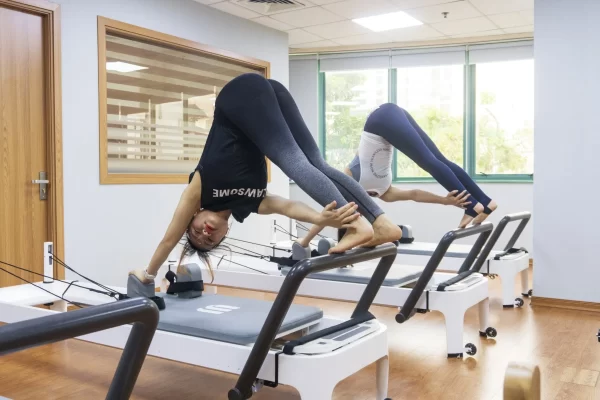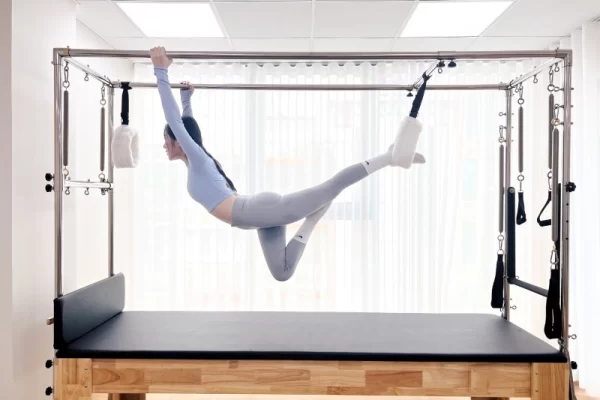Best Pilates Mat Guide: Benefits and Tips for Choosing the Right Pilates Mat
21/11/2025Pilates is a powerful training method that enhances health, improves flexibility, and supports better movement control. Among its essential tools, the Pilates mat plays a critical role in supporting your movements, ensuring safety, and improving training effectiveness. This article explores the top benefits of a Pilates mat and the most important factors to consider when choosing the right one.
Benefits of a Pilates Mat
The mat is an essential piece of Pilates equipment that offers many benefits:
Provides Comfort
A Pilates mat is made from thick and cushioned materials that protect your body from impact and enhance comfort. When performing floor based exercises, this exercise pad helps safeguards your spine and joints from hard surfaces while reducing skin irritation.

Benefits of Pilates mats.
Improves Grip & Stability
The surface of a Pilates mat provides excellent grip, helping you maintain proper form during balance focused exercises. This stability is especially valuable for beginners or those performing advanced sequences. Good grip also minimizes slipping and injuries.
Reduces Injury Risk
A Pilates mat protects your body from direct impact with the floor and reduces the risk of falls or joint stress. Its cushioned surface helps minimize pressure on your joints, preventing inflammation and other injuries.
Easy to Carry and Store
Most Pilates mats can be rolled or folded for easy transport to classes or storage at home. Their compact size makes them a convenient and space saving option for regular practice.
Important Tips for Choosing a Pilates Mat
Below are key factors to consider when selecting a suitable Pilates mat:
1. Where to Buy a Pilates Mat
You can purchase Pilates mats at sporting goods stores, Pilates equipment shops, or online marketplaces such as Shopee, Lazada, and Tiki. Some Pilates studios also offer mats for sale. Prices vary, so choose one that fits both your training needs and budget.
2. Size
Size is a crucial factor when choosing a Pilates mat. A larger mat offers more comfort but may be harder to carry if you travel frequently to classes.

Size is an important factor when choosing a Pilates mat.
A standard Pilates mat measures 68 x 26 inches (about 173 x 66 cm). Your mat should be long enough for you to stretch comfortably without going off the edges. Ideally, it should be at least 6 inches (15 cm) longer than your height and 1 foot (30 cm) wider than your body.
3. Thickness
A proper Pilates mat should be at least 1/2 inch (1.27 cm) thick. However, 5/8 inch (1.6 cm) or 3/4 inch (1.9 cm) is even better, especially for beginners.
A thicker mat provides better spinal and tailbone protection during rolling or sliding movements. For experienced practitioners, it adds comfort for side lying, back, abdominal, and kneeling exercises.
4. Material
Choose a mat made from firm yet soft materials that feel comfortable and offer good absorption. Because your body sweats during training, your mat must absorb moisture well and prevent slipping. A non slip bottom with ridges or patterns also helps maintain stability.
Investing in a high quality training mat ensures long term safety and better workout performance.
5. Anti Slip Performance
Sweat can make you slide during practice, so opting for a high grip surface is essential especially if you sweat easily. A sticky, non slip pad keeps you safe and steady throughout your workout.

Choosing a Pilates mat with good grip is very important.
6. Durability
A Pilates mat should withstand stretching and movement without tearing or deforming. Low quality mats tend to wear out quickly. Choosing a thick, durable mat ensures long lasting performance and safety.
7. Weight of the Mat
Choose based on where you train.
If you practice at home, a heavy mat is fine.
If you carry it to classes, a lighter mat is more convenient.
Lightweight mats with straps or carrying bags make transportation much easier.
8. Easy to Clean
A Pilates mat should be easy to clean because sweat can cause odor and staining. Choose mats with smooth surfaces for easy wiping, antibacterial coating, and closed cell structure to prevent sweat absorption. These mats stay cleaner and more hygienic over time.
Choosing the right Pilates mat ensures a safer and more effective workout experience.
9. Risks of Low Quality Pilates Mats
Cheap mats are often made from PVC foam that contains phthalates and other harmful chemicals. They usually have a strong plastic smell and may contain cadmium or lead. Avoid low quality mats to protect your health and ensure safe training.
Tips to Keep Your Pilates Mat Clean and Long Lasting
A Pilates mat is essential for maximizing your training results. To keep it clean and durable, follow these tips:

Tips to keep your carpet clean and prolong its life.
- Wipe after every use: Remove sweat and dust after each session.
- Wash periodically: Follow the manufacturer’s instructions to keep the mat fresh and odor free.
- Store properly: Roll it up and keep it in a dry place away from direct sunlight.
- Wear socks during training: Keeps your feet clean and reduces bacteria.
- Remove jewelry: Prevents scratches and punctures.
- Trim nails: Protects the mat from tearing.
By following these care tips, your Pilates mat will stay clean, durable, and long lasting.
Choosing the right Pilates mat not only enhances your training experience but also protects your health and safety. From providing comfort to reducing injury risk, a quality mat is a key companion on your Pilates journey. Remember these essential considerations when choosing your mat so you can enjoy the full benefits of Pilates. Wishing you the best in finding the perfect mat and having effective, enjoyable workouts!






